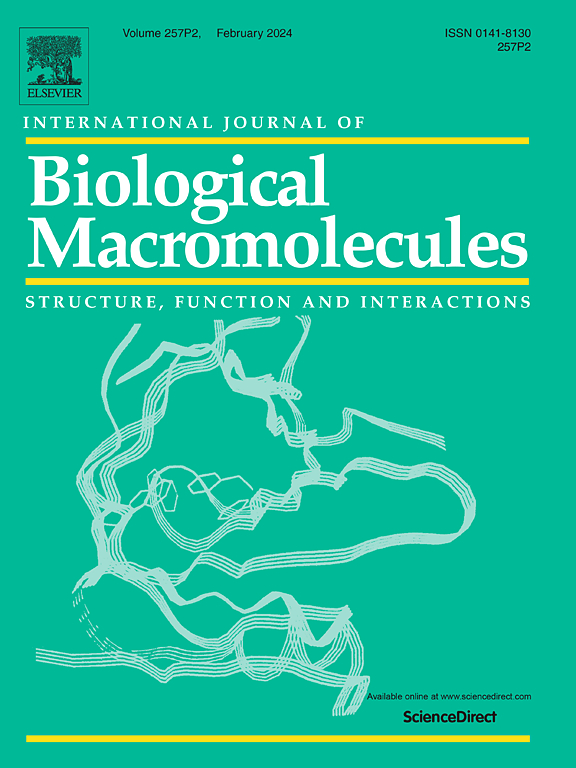Phase separation drives the folding of recombinant collagen
IF 7.7
1区 化学
Q1 BIOCHEMISTRY & MOLECULAR BIOLOGY
International Journal of Biological Macromolecules
Pub Date : 2024-11-04
DOI:10.1016/j.ijbiomac.2024.137170
引用次数: 0
Abstract
Recombinantly produced collagens present a sustainable, ethical, and safe substitute for collagens derived from natural sources. However, controlling the folding of the recombinant collagens, crucial for replicating the mechanical properties of natural materials, remains a formidable task. Collagen-like proteins from willow sawfly are relatively small and contain no hydroxyprolines, presenting an attractive alternative to the large and post-translationally modified mammalian collagens. Utilizing CD spectroscopy and analytical ultracentrifugation, we demonstrate that recombinant willow sawfly collagen assembles into collagen triple helices in a concentration-dependent manner. Interestingly, we observed that the lower concentration threshold for the folding can be overcome by freezing or adding crowding agents. Microscopy data show that both freezing and the addition of crowding agents induce phase separation. We propose that the increase in local protein concentration during phase separation drives the nucleation-step of collagen folding. Finally, we show that freezing also induces the folding of recombinant human collagen fragments and accelerates the folding of natural bovine collagen, indicating the potential to apply phase separation as a universal mechanism to control the folding of recombinant collagens. We anticipate that the results provide a method to induce the nucleation of collagen folding without any requirements for genetic engineering or crosslinking.

相分离驱动重组胶原蛋白的折叠。
重组生产的胶原蛋白是天然来源胶原蛋白的一种可持续、道德和安全的替代品。然而,控制重组胶原的折叠是复制天然材料机械特性的关键,这仍然是一项艰巨的任务。柳锯蝇的胶原样蛋白相对较小,不含羟脯氨酸,是大分子和翻译后修饰的哺乳动物胶原蛋白的一个有吸引力的替代品。利用 CD 光谱和分析超速离心法,我们证明了重组柳锯蝇胶原蛋白以浓度依赖的方式组装成胶原蛋白三螺旋。有趣的是,我们观察到折叠的低浓度阈值可以通过冷冻或添加拥挤剂来克服。显微镜数据显示,冷冻和添加拥挤剂都会导致相分离。我们认为,相分离过程中局部蛋白质浓度的增加推动了胶原蛋白折叠的成核步骤。最后,我们发现冷冻也能诱导重组人胶原片段的折叠,并加速天然牛胶原的折叠,这表明相分离有可能作为一种通用机制用于控制重组胶原的折叠。我们预计,这些结果提供了一种无需基因工程或交联就能诱导胶原蛋白折叠成核的方法。
本文章由计算机程序翻译,如有差异,请以英文原文为准。
求助全文
约1分钟内获得全文
求助全文
来源期刊
CiteScore
13.70
自引率
9.80%
发文量
2728
审稿时长
64 days
期刊介绍:
The International Journal of Biological Macromolecules is a well-established international journal dedicated to research on the chemical and biological aspects of natural macromolecules. Focusing on proteins, macromolecular carbohydrates, glycoproteins, proteoglycans, lignins, biological poly-acids, and nucleic acids, the journal presents the latest findings in molecular structure, properties, biological activities, interactions, modifications, and functional properties. Papers must offer new and novel insights, encompassing related model systems, structural conformational studies, theoretical developments, and analytical techniques. Each paper is required to primarily focus on at least one named biological macromolecule, reflected in the title, abstract, and text.

 求助内容:
求助内容: 应助结果提醒方式:
应助结果提醒方式:


